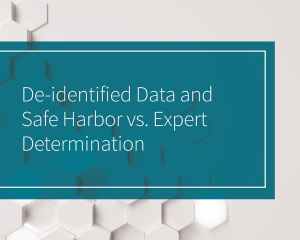As of January 2022, 483 Accountable Care Organizations are serving 11 million beneficiaries. ACOs come in all shapes and sizes, but all need to adapt to downside financial risk while keeping at-risk patients healthy and out of high-cost care settings.
ACOs are already ahead of the game because they possess a strong foundation of collaboration and cost containment. What else can they do to further contain costs? They can look beyond clinical data and pull from external data sources, when necessary, to understand why certain patients drive the bulk of healthcare costs and experience negative health outcomes. Identifying these at-risk populations from a clinical perspective is only part of the equation.
Using Social Determinants of Health Data for Whole Person Care
Social determinants of health data gives providers a well-rounded view of a person’s lifestyle, environment, situation and behaviors— many of which have been proven to correlate with health outcomes.
With this type of information, you can look at a patient holistically to understand why they are struggling to stay engaged or manage their health. Why is it harder for certain patients to manage their obesity? Why are certain patients with heart disease frequently readmitted to the hospital? Why do certain patients with diabetes frequently visit the ED?
SDOH data doesn’t replace the value of medical data—it serves as a supplemental data source to paint a clearer picture of health risk so clinical and social services can intervene immediately. What is also critical is looking at how those factors combined contribute to outcomes and readmissions risk.
By addressing social and economic barriers upstream, ACOs can:
- Allocate limited resources more effectively
- Predict health risk based on social determinants
- Take preventive measures to improve outcomes and reduce costs
- Treat the patient as a whole person and not just as a medical condition
- Partner with community care resources to fill in gaps in care
- Understand previously unknown barriers to health management
Social Determinants of Health Insights and Utilization
Additional sources of data, like social determinants of health (SDOH), provide critical insight into healthcare utilization and spending. Social Determinants of Health data can even show the risk of hospital readmissions that could impact Medicare reimbursement rates and Star ratings.
ACOs can correlate spending trends with SDOH data to most efficiently allocate care resources and contain unnecessary spending. They can also correlate utilization data (e.g., ED visits and acute care hospital days per 1,000 beneficiaries) with SDOH data to understand why certain patients access high-cost services and steer these patients toward lower-cost settings.
Consider these three examples:
- An ACO notices an uptick in spending for patients with heart disease. SDOH data (e.g., household information, transportation information, information on relatives and associates, and zip code) helps the ACO identify patients who may be socially isolated, so it can proactively connect these individuals with community resources to provide social support.
- An ACO is focused on reducing ED visits for diabetic patients. Social Determinants of Health data (e.g., propensity or risk scores built from SDOH data) helps the ACO identify patients who may benefit from care coordinators who provide ongoing education and support to ensure these individuals take their insulin properly.
- An ACO decides to target obesity to improve health outcomes. SDOH data (e.g., neighborhood data, individual and household income, crime index and address) helps the ACO understand what types of services would best benefit their patients to help guide them in creating partnerships with community-based organizations to assist with healthy food access and physical activity options.
ACOs are the very definition of value-based care. To thrive, these organizations must continue to look at whole-person care and engaging patients with personal, targeted care information to improve health outcomes and lower costs.





